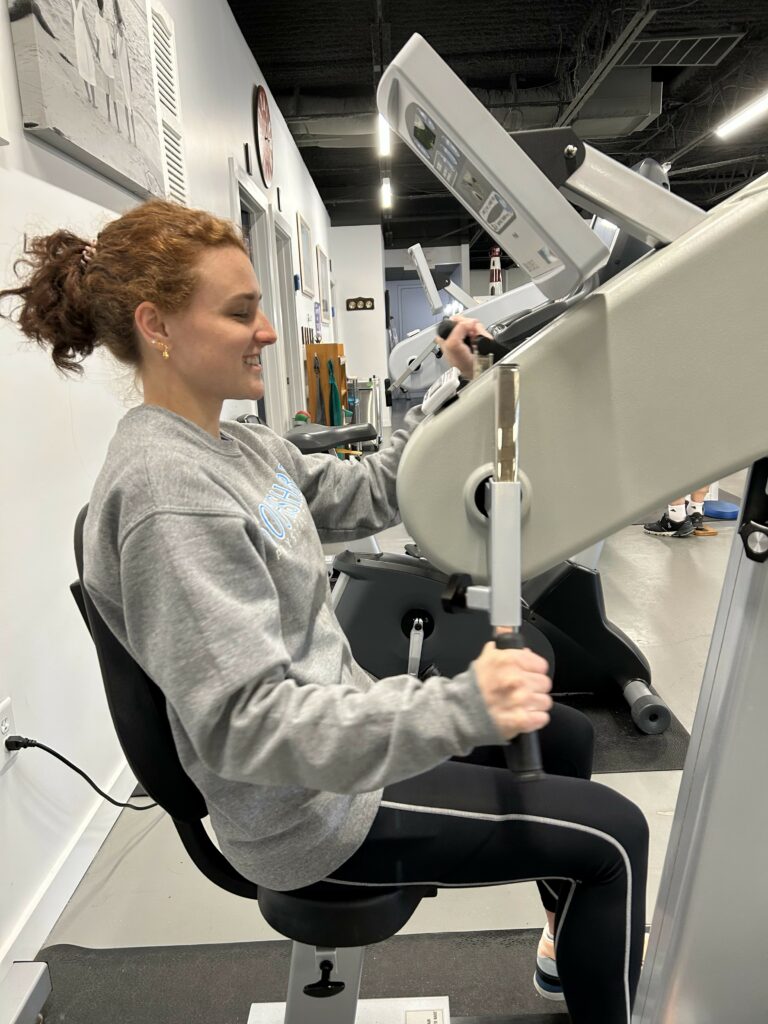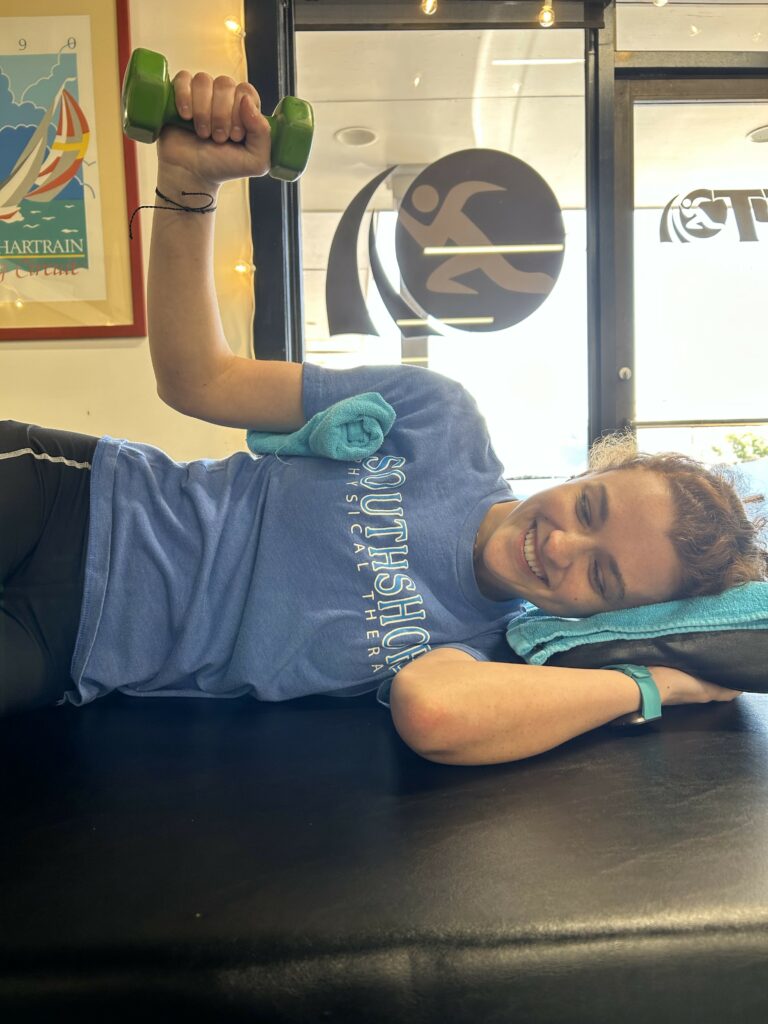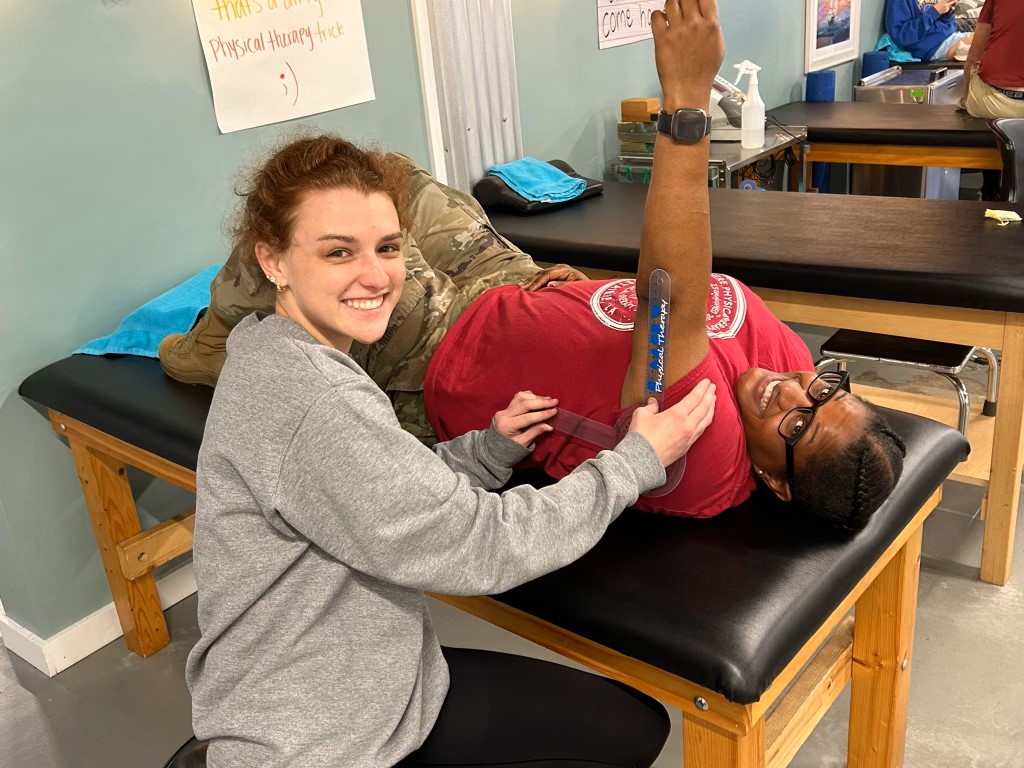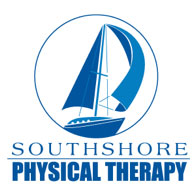
From throwing a football and swimming the backstroke to drying your hair and reaching for that big jar of pickles on the top shelf, the many activities of the shoulder make it one of the most useful but also overused joints on the human body. The mainstay (or backbone, if you will) of the shoulder is the rotator cuff, the four muscles that sit on the shoulder blade (scapula) and attach to the upper arm (humerus) like a cuff, hence the name.
The rotator cuff has two primary functions: (1) To stabilize the joint in its socket so you can raise your arm, and (2) To rotate back and forth so you can reach behind your back and head. Therefore, inflammation or even a tear in this major component can be pretty disruptive or even debilitating to your daily routine.

When experiencing pain in the shoulder, you should seek the assistance of physical therapist and/or an orthopedic physician.
If you begin with a physical therapist … the therapist will conduct an evaluation and can initiate treatment while you are waiting to see the doctor, sometimes eliminating the need to visit the doctor altogether.
If you begin with a doctor … he or she will conduct an evaluation and order x-rays to determine if there is any pathology (bone spurs or fractures) or anomalies (tumors or other disease). The doctor will then prescribe NSAIDs (non-steroidal anti-inflammatory drugs) and PT. Should the issue be more severe, an MRI would be ordered to determine if there is a tear in the tendons or muscles that would require surgery. This surgery would then be followed by … you guessed it … physical therapy.

When you come to Southshore to get your shoulder back up and running (as it were), your rehabilitation will consist of a five-step approach:
- Time – To decrease inflammation and allow the body to heal (NSAIDs prescribed by a physician can speed up this process)
- Relative Rest – To allow for healing but not be so restrictive that recovery is compromised or slowed (as defined by Veritas Health)
- Range of Motion Exercises – To perform normal stretching maneuvers that are either self-guided or therapist-assisted
- Strength Exercises – To restore normal function in the rotator cuff muscles and scapular stabilizer muscles
- Flexibility Exercises – To regain normal, pain-free usage of muscles and joints
Our primary goal at the clinic is to help you recover from or … better yet … completely avoid surgery. So, if you’re experiencing pain and are ready for relief, stop shrugging off your responsibility to your wellbeing. Show some muscle and come see us at Southshore Physical Therapy. Our joint effort will take a big weight off your shoulders.
(Sorry. We were just trying to be humerus.)
Don’t wait until you feel pain in your shoulder. To improve and maintain healthy flexibility and range of motion, try assisted stretching offered at Southshore PT.
Michele Robert Poche
